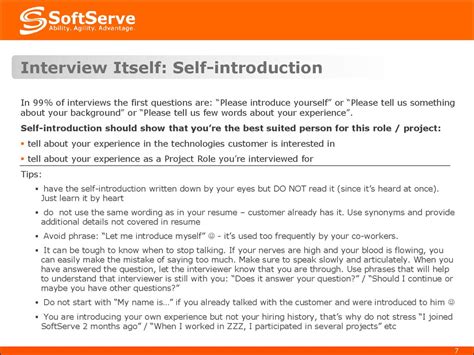Mastering Self-Introduction At Work: Tips, Examples & More

When starting a new job or meeting new colleagues, a strong self-introduction can make a lasting impression and help you establish rapport and credibility. Mastering the art of self-introduction at work is essential for building professional relationships and creating a positive impression. In this article, we will provide you with valuable tips, examples, and more to help you confidently introduce yourself in the workplace.
1. Understand the Purpose of a Self-Introduction
Before diving into the tips and examples, it’s important to understand the purpose of a self-introduction. A self-introduction is an opportunity to showcase your skills, experience, and personality to your colleagues or potential employers. It allows others to get to know you and creates a foundation for future interactions.
2. Prepare Your Elevator Pitch
An elevator pitch is a concise and compelling introduction that can be delivered in the time it takes to ride an elevator. It should summarize your professional background, key skills, and goals. Crafting a well-prepared elevator pitch will help you make a strong first impression and leave a lasting impact.
Example:
“Hi, my name is [Your Name]. I have a background in marketing with expertise in digital strategy and content creation. I’m passionate about driving brand growth through innovative marketing campaigns and building strong customer relationships.”
3. Tailor Your Introduction to the Audience
When introducing yourself, it’s important to consider the context and tailor your introduction to the specific audience. Depending on the situation, you may need to emphasize different aspects of your background or highlight specific skills that are relevant to the individuals you are addressing.
4. Be Clear and Concise
Avoid rambling or providing excessive details in your self-introduction. Keep it concise and focused on the most important information. Be clear about your name, role, and key qualifications or achievements. This will help others remember and understand your introduction more easily.
5. Use Confident Body Language
Your body language can speak volumes about your confidence and professionalism. When introducing yourself, maintain good posture, make eye contact, and offer a firm handshake if appropriate. These non-verbal cues will reinforce your self-assurance and make a positive impression.
6. Highlight Your Unique Selling Points
What sets you apart from others in your field? Identify your unique selling points and incorporate them into your self-introduction. Whether it’s a specific skill, experience, or achievement, showcasing your strengths will make your introduction memorable and leave a lasting impression.
Example:
“Hi, I’m [Your Name]. I have a background in finance, and what sets me apart is my experience in managing multi-million dollar portfolios for Fortune 500 companies. I thrive in fast-paced environments and have a proven track record of delivering exceptional results.”
7. Practice, Practice, Practice
The old saying “practice makes perfect” holds true when it comes to self-introductions. Take the time to practice your introduction in front of a mirror or with a trusted friend or mentor. This will help you refine your delivery, build confidence, and ensure a smooth introduction in real-life situations.
8. Be Authentic and Genuine
While it’s important to prepare and practice your self-introduction, it’s equally important to be authentic and genuine. Avoid coming across as rehearsed or overly polished. Let your true personality shine through and connect with others on a genuine level.
9. Be Mindful of Cultural Differences
When introducing yourself in a multicultural or diverse workplace, be mindful of cultural differences. Take the time to understand and respect the customs and norms of your colleagues or potential employers. This will help you navigate cultural sensitivities and build strong relationships.
10. Follow Up with a Conversation Starter
After delivering your self-introduction, it’s important to follow up with a conversation starter. This can be a question related to the topic at hand or a genuine interest in getting to know the other person. Engaging in further conversation will help you establish a connection and continue building relationships.
Conclusion
Mastering self-introduction at work is an essential skill for professionals. By understanding the purpose, preparing an elevator pitch, tailoring your introduction, using confident body language, highlighting your unique selling points, practicing, being authentic, considering cultural differences, and following up with a conversation starter, you can make a lasting impression and build strong professional relationships.
FAQs
Q: What is the purpose of a self-introduction at work?
A: The purpose of a self-introduction at work is to showcase your skills, experience, and personality to your colleagues or potential employers, creating a foundation for future interactions.
Q: How long should a self-introduction be?
A: A self-introduction should be concise and focused, typically lasting around 30-60 seconds.
Q: How can I make my self-introduction memorable?
A: To make your self-introduction memorable, highlight your unique selling points, use confident body language, and be authentic and genuine.
